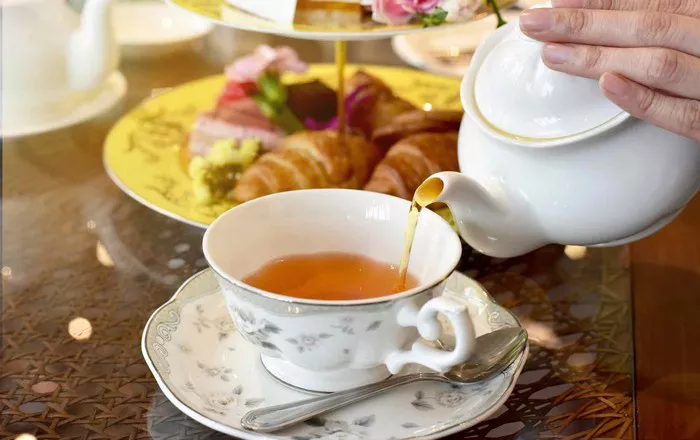Tea, with its rich history and diverse cultural significance, stands as a beverage enjoyed by millions worldwide. Beyond its familiar presence in our daily lives, there are intricacies and lesser-known facts about tea that contribute to its allure. This article will delve into six basics that may surprise even the most avid tea enthusiasts, shedding light on the nuanced world of tea, its origins, varieties, and unique attributes.
6 Basics You May Not Know About Tea
1. Tea:
At the heart of the world of tea lies the Camellia sinensis plant. Contrary to popular belief, all true teas, including green tea, black tea, white tea, and oolong tea, originate from this single species. The variations in flavor, aroma, and color arise from differences in processing methods and oxidation levels. Herbal teas, on the other hand, such as chamomile or peppermint tea, technically fall outside the tea category, as they are infusions made from a diverse array of plants. Understanding the botanical origin of tea is essential for appreciating the diverse tapestry of flavors that the world of tea has to offer.
2. Terroir:
Similar to the concept of terroir in wine, tea flavor is profoundly influenced by the environment in which it is cultivated. The soil, climate, altitude, and even the surrounding flora contribute to the unique characteristics of tea from different regions. For example, Darjeeling tea from India is renowned for its muscatel flavor, while Japanese matcha reflects the vibrant green landscapes of its origin. The term terroir captures the interconnected relationship between the natural environment and the distinctive qualities of tea. Exploring teas based on their terroir allows enthusiasts to appreciate the diversity that arises from the nuances of geography and climate.
3. The Art of Tea Processing:
Tea undergoes a meticulous process from harvest to cup, involving distinct stages of withering, rolling, oxidizing, and drying. The level of oxidation determines the category of tea—green tea undergoes minimal oxidation, black tea experiences full oxidation, and oolong tea falls somewhere in between. White tea is the least processed, with the leaves simply withering and drying. Understanding the art of tea processing demystifies the alchemical transformation from fresh leaves to the myriad flavors and aromas that grace our teacups. Each step is a testament to the craftsmanship that defines the world of tea.
4. Tea Caffeine Dynamics:
While tea is often associated with providing a gentle energy boost, its caffeine content varies widely. The caffeine dynamics are influenced by factors such as the type of tea, brewing time, and water temperature. Contrary to popular belief, green tea is not universally lower in caffeine than black tea. In fact, the brewing process plays a more significant role in caffeine levels. A shorter steeping time generally results in a lower caffeine content, offering tea enthusiasts the flexibility to tailor their tea experience based on their desired energy levels. Understanding the caffeine nuances allows for a more informed and personalized approach to tea consumption.
5. Tea Storage:
Proper storage is crucial to preserving the freshness and flavor of tea over time. Tea leaves are highly susceptible to absorbing external odors and moisture, which can compromise their taste. Ideally, tea should be stored in airtight containers, away from strong-smelling substances, in a cool, dark place. Different types of tea require specific storage considerations, as green tea is more delicate and prone to oxidation, while aged pu-erh tea benefits from controlled humidity levels. The art of tea storage is an often overlooked aspect that can significantly impact the quality of the tea-drinking experience.
6.Tea and Mindfulness:
Beyond its physical attributes and chemical composition, tea holds a profound cultural and spiritual significance in many societies. The act of preparing and savoring tea is often associated with mindfulness and relaxation. Tea ceremonies, such as the Japanese Chanoyu or the Chinese Gongfu Cha, exemplify the transformative power of tea-drinking into a meditative ritual. Engaging in the art of tea as a mindfulness practice encourages individuals to slow down, savor the present moment, and appreciate the sensory journey that each cup of tea provides. This holistic perspective transcends the mere act of drinking tea and elevates it to a transformative and contemplative experience.
Conclusion:
Tea, with its rich heritage and diverse array of flavors, transcends the boundaries of a mere beverage. From the botanical origins in Camellia sinensis to the influence of terroir on flavor, the art of processing, caffeine dynamics, storage considerations, and the mindfulness associated with tea rituals, there is a vast and intricate world waiting to be explored. Embracing these six basics not only enhances one’s appreciation for the complexities of tea but also transforms the act of tea-drinking into a holistic and mindful experience. As we embark on this journey through the realms of tea, let these insights enrich your tea-drinking moments and deepen your connection to this timeless and revered elixir.
























